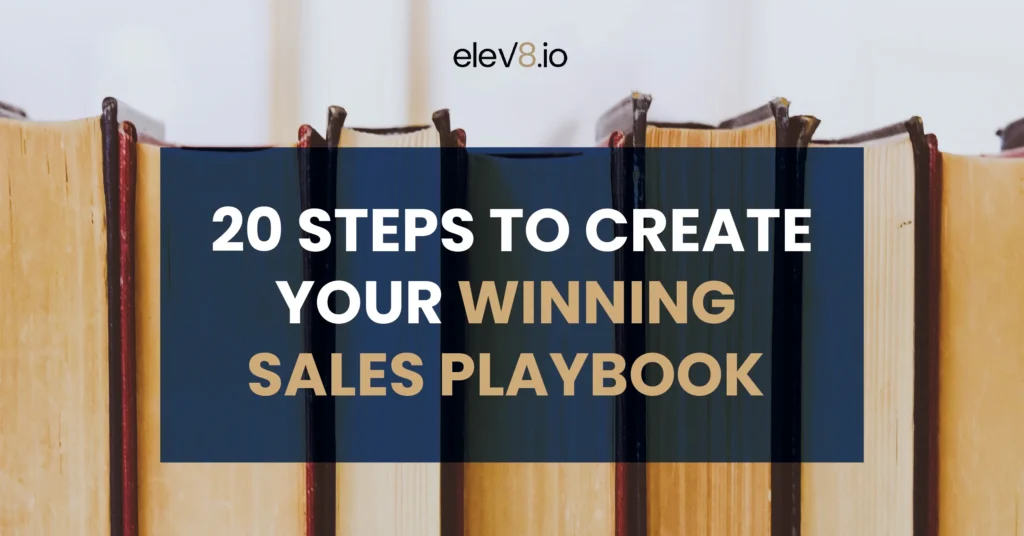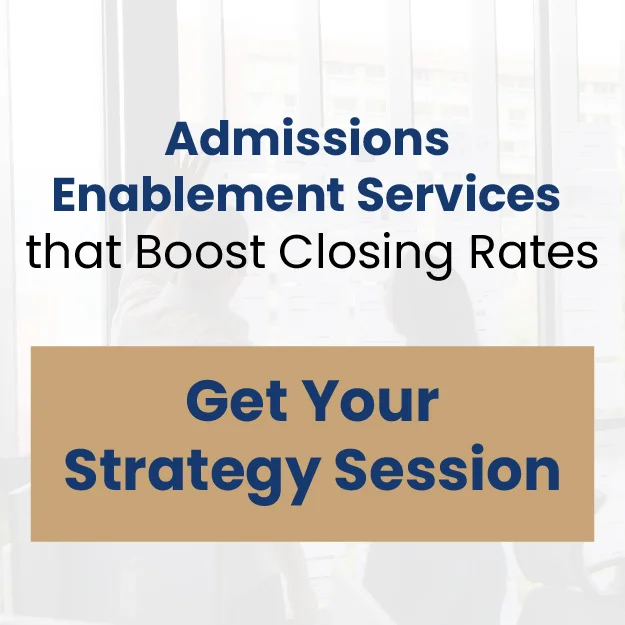In my experience, one of the most overlooked, yet most important, elements in developing your company’s revenue engine is the Sales Playbook. In this post I highlight 20 key elements you should include, all spelled out in more detail in my book The 0 to 100 Million Sales Blueprint.
Once you’ve identified your sales methodologies, lead qualification criteria, developed scripts, email sequences and much more—now it’s time to document everything and put it into writing by creating your Sales Playbook.
In simple terms, your Sales Playbook is your one-stop resource for all the critical information that enables your sales reps to follow your established best practices and maximize your performance as you aim to scale your sales organization.
Just as you want a standardized new sales rep onboarding process, you need a streamlined overview of your go-to-market approach.
This is obviously not an easy task since you need to consider everything that goes into your sales process. But without it, much will be left to guesswork for your team, and that can be a breeding ground for bad habits that you want to avoid at all costs.
Sales Playbook Creation is a Team Effort
The scope of your ideal Sales Playbook may vary and I’ve seen quite a few versions over the years. My first playbooks were boiled down to a handful of steps and suggested processes that left much room for interpretation and imagination when it came to best practices.
Slowly but surely, by a process of trial and error and with many lost opportunities later, I’ve now developed what I consider to be a comprehensive Sales Playbook Framework which I’ve rolled out in quite a few companies, either as an owner or consultant.
There are many ways to go about crafting your Sales Playbook and I’ve done so for companies large and small across a variety of verticals.
As a universal recommendation, I encourage you to develop it as a joint initiative with several stakeholders in the company, including your reps, sales ops team and marketing. The more people you get involved, and the more they participate in sharing best practices, the more likely you are to attain full buy-in for what becomes your sales department’s operations manual.
20 Key Elements Your Sales Playbook Should Have
Failing to prepare is preparing to fail. So here’s an outline of the topics I usually recommend including in your company’s Sales Playbook:
1. Company overview
A company overview is a concise snapshot that provides an introduction and an overview of a company’s key aspects, including its mission, history, products or services, target market, competitive advantage, and financial performance. It gives a quick understanding of the company’s identity, strengths, and areas of focus. It communicates the company’s value proposition so the sales team can understand it and are able to clearly and consistently position value.
2. Organization chart and responsibilities
Together, the org chart and responsibilities provide a clear understanding of the structure and functions of an organization, ensuring effective communication, decision-making, and alignment of efforts towards achieving organizational goals.
3. Solution overview
A solutions overview is a concise summary that provides an outline of the key features, benefits, and capabilities of a particular solution. It gives your sales team a high-level understanding of how the solution addresses customers’ specific needs or challenges.
A well-crafted solutions overview will typically include a brief description of the problem or pain points being addressed, an explanation of how the solution solves those challenges, and a summary of the expected benefits or outcomes.
4. Sales process and customer journey overview
The B2B software sales process typically involves several stages and activities aimed at identifying potential customers, nurturing leads, and ultimately closing deals. Typical stages include: Prospecting, Qualifying, Needs Analysis, Solution Presentation, Proposal and Negotiation, Closing the Deal, Implementation and Onboarding, Account Management.
The B2B software sales process is iterative and often involves multiple touchpoints with the customer throughout the entire customer lifecycle, aiming to build long-term partnerships and drive customer success.
The customer journey refers to the overall experience and interaction a customer has with a business from the initial awareness stage through the final purchase and beyond. It encompasses the various touchpoints and stages a customer goes through when engaging with a product, service, or brand. A typical customer journey may involve: Awareness, Consideration, Decision, Purchase, Experience, Loyalty/Advocacy.
It’s important to note that the customer journey is not linear, and customers may loop back to previous stages or engage with multiple touchpoints simultaneously. Understanding and mapping the customer journey helps businesses identify pain points, opportunities for improvement, and develop strategies to deliver a seamless and delightful experience at each stage, ultimately building strong customer relationships.
It’s critical that your sales reps understand this and can communicate value at each step.
5. Key performance indicators and sales metrics
KPIs are quantifiable metrics used to track performance over time and provide a clear indication of success or areas that need improvement. They are chosen based on their relevance to the organization’s objectives and can vary across different industries and departments.
KPIs serve as performance benchmarks and allow organizations to monitor their performance effectively. By regularly tracking KPIs, organizations can make informed decisions, identify trends, set realistic targets, and allocate resources efficiently.
Sales metrics are a specific type of KPIs focused on sales performance used to evaluate and track the performance and effectiveness of a sales team or individual salesperson. These metrics provide insights into various aspects of the sales process and help organizations assess their sales performance, identify areas for improvement, and make informed decisions.
I believe so strongly in the importance of metrics that I titled Chapter 6 of my book “In God We Trust: Everyone Else Bring Data”. That’s where I identify 20 key sales metrics you can’t live without and spell out in detail why each is necessary and how it is used.
6. Lead qualification criteria and disqualification process
Lead qualification is the process of evaluating potential customers or prospects to determine their suitability and likelihood of converting into paying customers. The goal of lead qualification is to prioritize and focus sales efforts on leads with the highest potential for success, thereby maximizing sales efficiency and closing rates.
Effective lead qualification processes and criteria enable sales teams to focus their efforts on leads that have a higher likelihood of converting, thereby optimizing their time and resources. It increases the efficiency of the sales process, improves conversion rates, and ultimately contributes to the overall success of software sales.
A few popular lead qualification processes implemented with companies nowadays are BANT (Budget-Authority-Need-Timeline) and MEDDIC (Metrics, Economic buyer, Decision criteria, Decision process, Identify pain, and Champion)
7. Buyer persona overview
A buyer persona is a fictional representation of an ideal customer. It is created by gathering and analyzing data about the target audience to develop a detailed profile that encompasses their characteristics, preferences, needs, and motivations. The buyer persona is typically based on real customer data, market research, and insights obtained from existing customers.
Buyer personas are important for developing enhanced sales strategies. They enable sales teams to understand the motivations and buying behaviors of potential customers. With this knowledge, sales representatives can customize their sales pitches, messages, and approaches to match the specific needs and pain points of each buyer persona. This personalization enhances the effectiveness of sales interactions and increases the likelihood of closing deals.
8. Elevator pitch, USPs and value proposition
These three elements are closely related and are essential tools in your Sales Playbook.
An elevator pitch is a brief and concise description of a product, service, or idea. The goal of an elevator pitch is to capture the attention of the listener and communicate the essence of the concept or offering in a compelling and memorable way. Out of all the valuable training and sales methodologies I’ve learned, this is one of the more remarkable, because it enables immediate impact and can be used regardless of sales role and in any stage of the sales cycle.
A unique selling point (USP) is a distinctive feature or characteristic of a product, service, or brand that sets it apart from competitors in the marketplace. It’s a specific and compelling aspect that provides value to customers and gives them a reason to choose one offering over others.
A value proposition is a concise statement that summarizes the unique value or benefit that a product, service, or idea offers to its target audience. It communicates why customers should choose or engage with a particular offering over alternatives in the market. A strong value proposition effectively answers the question, “What’s in it for the customer?”
9. Research to conduct prior to each sales call
Besides the rudimentary business and factual information, this includes relevant PR, partnerships, awards or other recognition the prospect has attained, noteworthy articles by the prospect, and relevant information from their social media. This arms you to a degree that can help you outflank your competition. Often the devil is in those little details when it comes to earning trust and landing the deal.
10. Call scripts for each stage of process
A sales call script is a pre-planned set of guidelines and talking points that sales representatives use when making phone calls to potential customers. The script outlines the key information and messages that the salesperson wants to convey during the call to maximize the chances of a successful sale.
I include scripts for each key stage, e.g. discovery call, demo call, presentation call and close call.
11. Suggested questions for every step in your sales process
The following steps are typical but need to be adapted to your offering: introduction, opening statement, qualifying questions, product or service presentation, addressing objections, closing the sale, next steps. For each of these, develop key questions to prepare your sales reps to use them appropriately.
12. Common objections and rebuttal library
Develop a structured list of typical questions asked by prospects. Create a library of rebuttals and objection handling that sales reps can easily access and use.
13. Email sequences, templates and snippets
As a marketer with many companies under my belt, and having managed hundreds of millions of dollars in media spend, the single most effective and profitable customer acquisition strategy has always been outreach, i.e. email and social media messaging, coupled with traditional snail mails and occasional phone calls. Note, this is not cold calling.
Therefore developing well thought out email outreach sequences with accompanying sales content templates and snippets of messaging to easily use is critical.
14. Solution demo samples
In my experience over 20 years, a critical success factor is mapping out everything important you want to cover during the demo call, what you want to highlight and being prepared to discuss any feature your prospect may want to focus on. Your Playbook must contain screenshots or links to your solution demos with accompanying explanatory notes on how to conduct demos and handle questions or objections that may arise.
15. Deal agreement samples and negotiation tactics
Include examples of your typical agreements and contracts so your reps understand what goes into them. Define and show common negotiation methods and tactics that have proven useful.
16. Competition overview
The overview includes key insights from your competitive analysis and puts them into bite-size, easy-to-view chunks. With this comparative data you can equip all your client-facing staff to identify which competitor(s) they are up against when conducting sales calls and how to handle questions about them or objections.
17. Overview of marketing resources and sales enablement materials
List and link to all relevant resources your marketing team has developed. Include other enablement materials as needed.
18. Training schedule and sales career development paths
According to CSO Insights, there’s a 16.2% higher chance that your reps hit their quota if there’s an effective onboarding process in place. This should include available training types and dates as well as an outline of career pathing options to motivate reps to outperform.
19. Tech stack manuals
A tech stack is your suite of complementary sales tools and technology that supercharges your sales and revenue growth. Include links to all relevant manuals your reps may need to consult. Your investments in sales tech and mar tech is only worth it if your sales reps adopt the tools effectively.
20. Compensation plan and commission structure
Summarize your comp plans and clearly state the commission structure for quick reference. Sales reps are competitive, driven and hungry (the best are at least) so you want to always dangle the carrot in front of them with an easy to understand comp plan.
Your playbook is critical to your sales success
With all these elements included, your Sales Playbook becomes a one-stop resource for all the critical information that enables your sales reps to follow your established best practices, maximize performance and win customers as you aim to scale your sales organization.
For further information refer to my book or contact me at gary@elev8.io to arrange a consultation on how to create your Sales Playbook.








